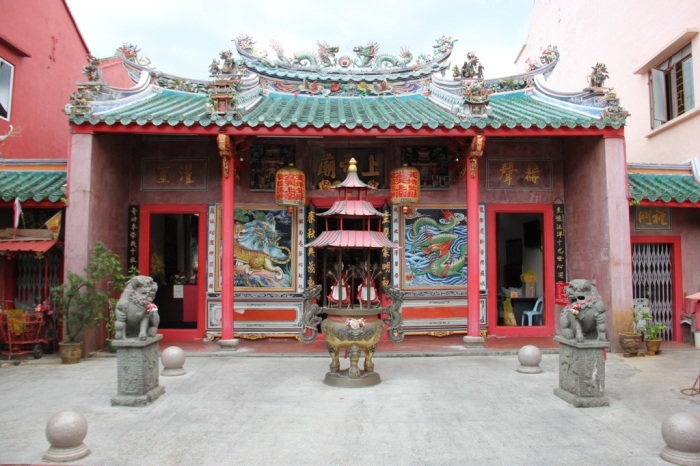The history of the Chinese community in Sarawak has and
always been an interesting topic to ponder, especially when they managed to
preserve one of their oldest temples in the midst of the Kuching city. The Siew
San Teng Temple (also known locally as Tua Pek Kong Temple) is the earliest known
and oldest Chinese temple built near the waterfront of Kuching, Sarawak.
Located just opposite the Chinese
History Museum and overlooking a busy junction, it is one of the most famous
tourist destinations in Sarawak. From its humble beginnings as a small and
simple hut some time during the 1800s, its first known renovation was done in
1856, and was upgraded with ceramic roofing and partially brick walls in 1863.
Charles Brooke, the second Rajah of Sarawak, issued the earliest known official
land title for the temple in 1871. The introduction of cement in 1880 has
played a major role in massive renovation projects, which led to what it is
now. It is so well-preserved that it stood up as an attraction in the midst of
the busy traffic.
It is said that the temple has the best Feng Shui location
since it was one of the buildings that survived the Great Fire of Kuching and
remained intact during the 1941 Japanese occupation, where the Japanese Imperial Army bombed the
area and nearby buildings were badly damaged and some were completely
demolished. It is also said that the placement of the temple itself, of which
it faces the water and the mountains, ensures a good channel of Feng Shui for
its devotees to come and doing their prayers for their deity.
Above is the view from inside of the temple. Below is the photo of the altar where the
people pay respect for their deities.
If you happen to have a vacation in Kuching, please do visit
this temple. And one more thing, being charitable is not as bad as it seems,
for it might bring good fortune.






















